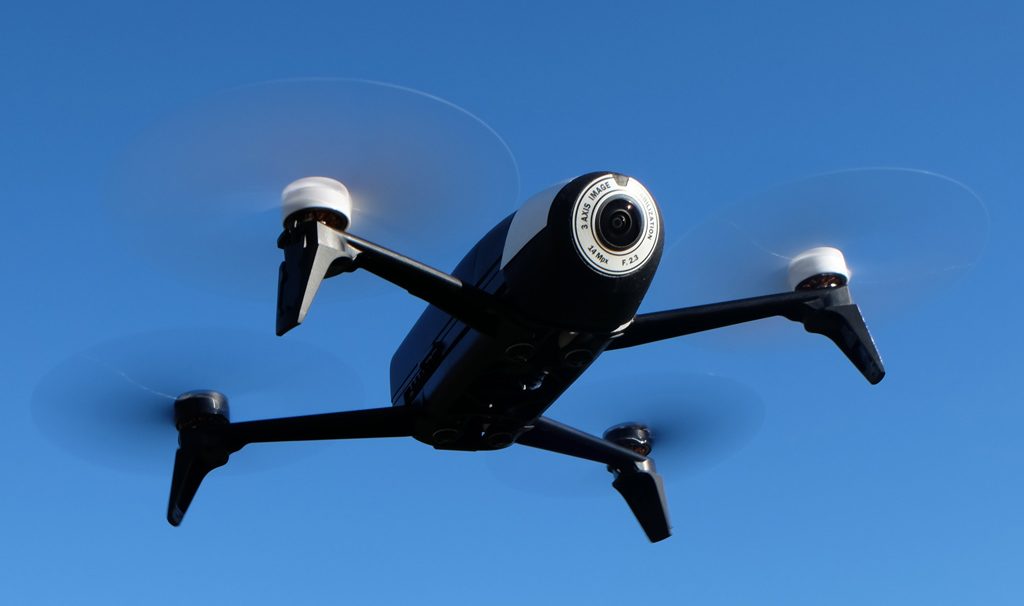
For Parrot, the Bebop 2 was an incremental improvement over the original, focusing primarily on battery life, flight stability and improved optics. While the drone still hasn’t changed since it launched, how it flies now has with the FPV bundle it comes with. Using the new SkyController 2 and CockpitGlasses headset, flying it looks and feels very different from before.
If you happen to already own a Bebop 2, and have the impression that you’re missing out on something, don’t worry. The mechanics inside the drone are the same, so an existing Bebop 2 could connect and work perfectly fine with these new peripherals. Having already reviewed the drone months ago, I’m focusing more on what’s changed in this article.
Design and setup
Parrot didn’t change anything, which is a good thing. This is still the same quadcopter that weighs 500 grams and runs off of the same 2700mAh battery. It even maintains the same colour schemes. It’s also the same 14-megapixel camera up front, though software improvements seem to have improved image quality.
Using the same design, the build quality is stable, but not without being susceptible to strong wind gusts. It flies in spite of them, though not without swing a little along the way.
One key difference in the setup is that the Bebop 2 comes in the box with its propellers off (they are on in the original box), meaning I had to place them on. I realized too late that the propellers in the box are lined up with where they are supposed to go on the drone itself. The reason for this is because two of them have open tops, while the other two don’t. To ensure a proper fit, they have to be slotted into their respective spots. From there, they need to be fastened into the motors with an included tool that helps slide them in place. The included Quick Start Guide visualizes this well, so following that should negate any mistakes.
Not paying attention, I made the mistake of misaligning the propellers, leading one to snap off completely in mid-flight, sending the Bebop 2 crashing down. One propeller was damaged beyond repair, but the drone was otherwise fine.
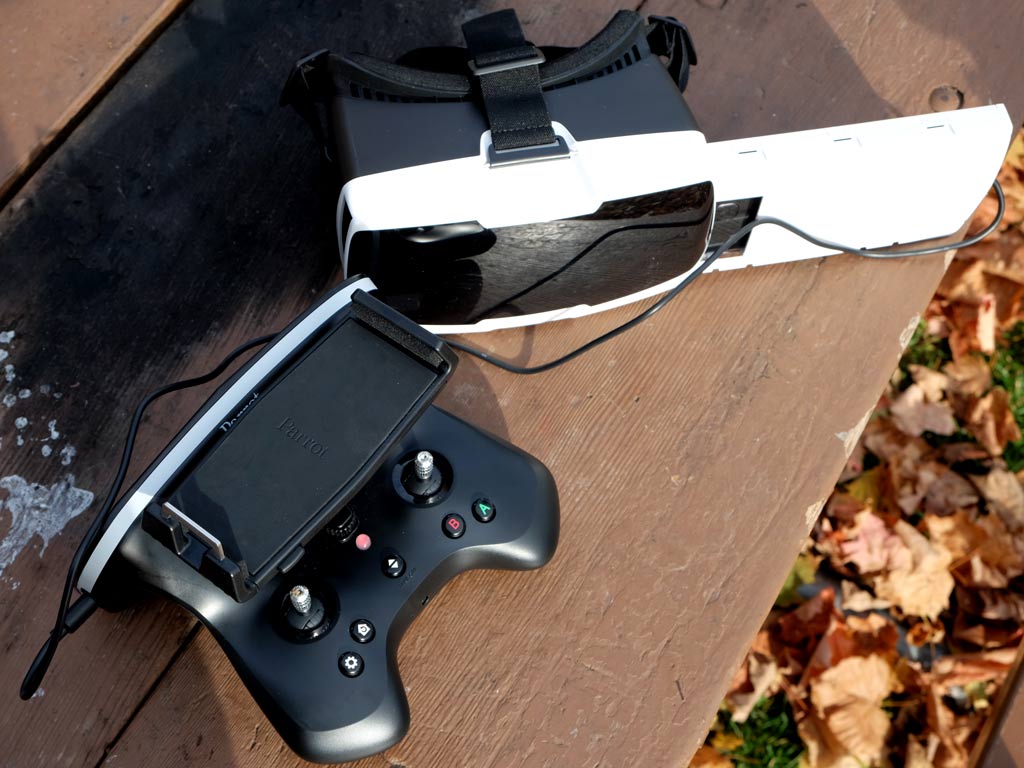
The Bebop 2 now comes bundled with the SkyController 2 and CockpitGlasses. The controller itself is vastly reduced in size and weight from the original, to the point where I felt like I was holding a game console controller. The range and connection with the drone during flight also felt more stable, so better antennas may have been built in to improve performance.
The headset is new, and works with a compatible smartphone to beam the drone’s live view from the camera directly to your eyes. It feels like sitting in a cockpit, and is a major change in what the experience is like to fly a drone. More on that later.
FreeFlight Pro app
When the Bebop 2 first launched in Canada in the spring, Parrot was on the FreeFlight 3 app, and that has since been updated and renamed to FreeFlight Pro. The redesigned interface makes more sense now, simplifying how to customize controls, where there are several options. Technically, you can still fly the drone using only the app on a smartphone or tablet, but the reduced size of the SkyController 2, coupled with how much more precise it is, makes it negligible in my books.
The default controls are pretty straightforward, but if you find you want to customize something, you can do that through the settings on the app. The A and B buttons are already programmed to control the camera — A to snap photos, B to start and stop video recording. As an example, one or both of those could be programmed to trigger flips instead. Joystick sensitivity is adjustable, as is the metrics information displayed on the live view.
As always, firmware updates can flow to the drone directly from the app, and is a seamless process, so long as you have an Internet connection to download them. Internal storage is still 8GB, and it can fill up quickly, so the app also enables transferring recorded video and photos over to the paired phone or tablet. The other option is to plug the drone directly into a computer and do it that way.
Since the Bebop 2 comes with the CockpitGlasses headset, switching to the FPV mode through the app is a simple tap (there’s a headset icon) to switch to that.
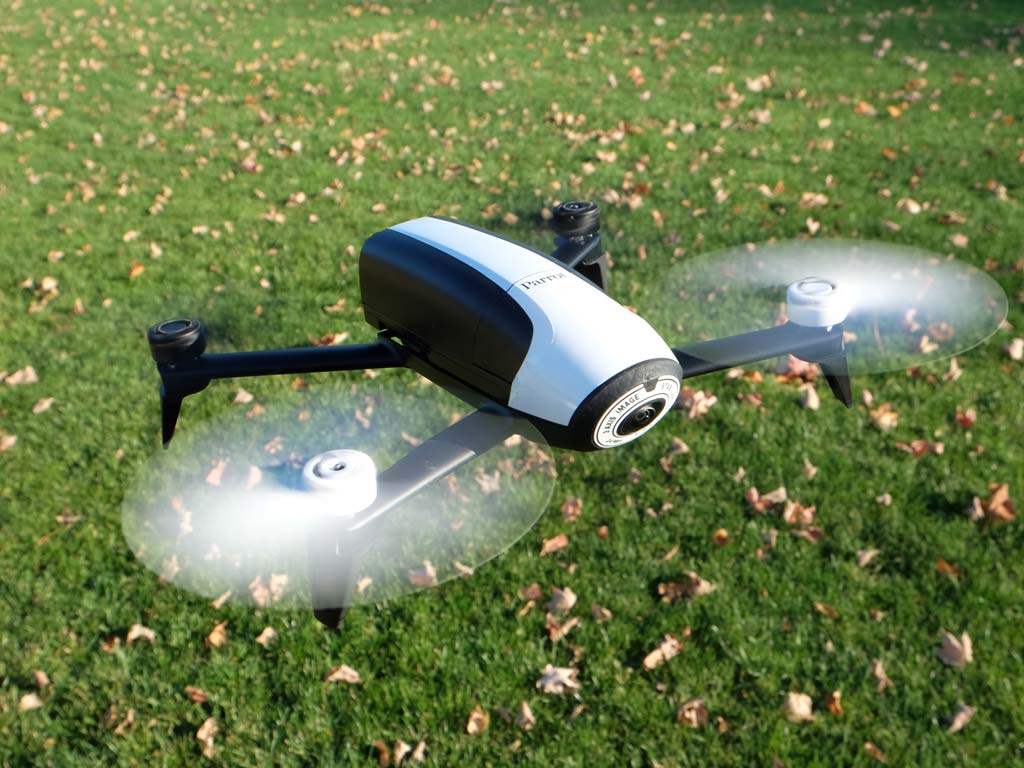
Performance
There is nothing inherently different in how this Bebop 2 flew compared to the one I reviewed months ago. Takeoff, flight and landing were all exactly as they were. Not that I was surprised. It was highly unlikely Parrot would overhaul anything because of a change in peripherals.
Those do make a major difference though. The original SkyController was bulky and cumbersome to transport and carry around. Flying with the app alone, using the touchscreen for virtual controls, is a far worse alternative. The SkyController 2 is a serious improvement, both in its form factor and in its performance. I would never fly the Bebop 2 without it, to be honest. The precise controls and tactile feeling ensure I can look at the drone the entire time it’s in the air. That’s simply not possible with the app alone.
The same default limitations and adjustable sliders apply, so while the Bebop 2 is restricted in altitude and distance, there is some extra leeway under the app’s settings. The drone can do the same flips, all of which are available to choose from in the heads-up display (HUD).
The same $20 Flight Plan add-on through the app is back, allowing you to set multiple waypoints for a path the drone follows before returning to the takeoff point. Scenario Mode is also back, a path that mixes altitudes, flips, photos, video and camera orientation into one flight.
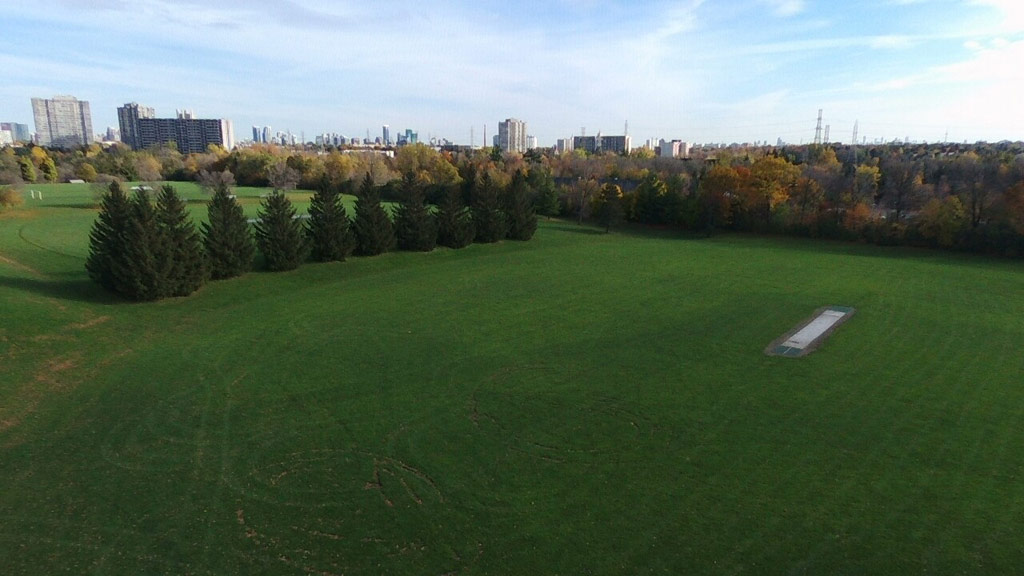
Whatever software optimization Parrot did to the camera seems to have made a difference. Image quality appears a little crisper than before, and there’s a smoothness to shifting orientations that was more problematic when the drone first launched. I would have liked to see better auto-exposure because it tends to overexpose slightly and desaturate images. I could adjust these things in the camera settings, but doing it on the fly isn’t always practical or desirable, and not every user would know what to do anyway. Skewing the exposure a little bit the other way would make video and photos look richer, in my opinion.
First-person view (FPV)
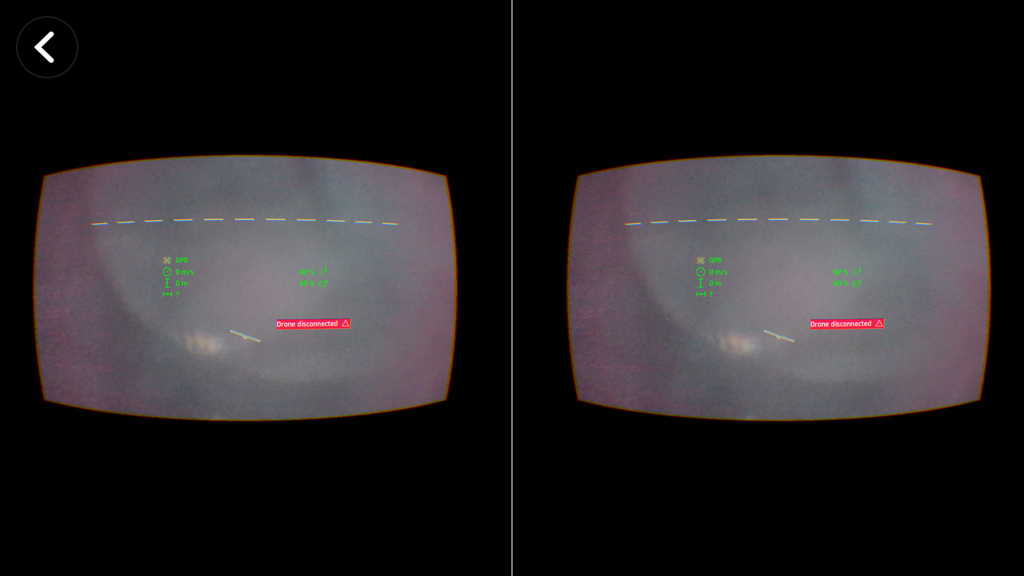 Parrot is clearly embracing the FPV use case, and the CockpitGlasses are compatible with a wide range of phones. The list I have includes the iPhone 7, 7 Plus, iPhone 6, 6 Plus, 6s and 6s Plus, Pixel, Pixel XL, Nexus 5, 5X, Sony Xperia Z5, LG G3, G4, G5, Galaxy S5, S6, S7, S7 Edge, Note 3 and Note 4 and Note 5. That’s only a portion. The slot inside has room for iOS and Android phones with screens between 4.7- and 5.5-inches. No cases can fit inside, though glass screen protectors should be okay.
Parrot is clearly embracing the FPV use case, and the CockpitGlasses are compatible with a wide range of phones. The list I have includes the iPhone 7, 7 Plus, iPhone 6, 6 Plus, 6s and 6s Plus, Pixel, Pixel XL, Nexus 5, 5X, Sony Xperia Z5, LG G3, G4, G5, Galaxy S5, S6, S7, S7 Edge, Note 3 and Note 4 and Note 5. That’s only a portion. The slot inside has room for iOS and Android phones with screens between 4.7- and 5.5-inches. No cases can fit inside, though glass screen protectors should be okay.
Flying any drone in FPV is a totally different experience, so while not specific to the Bebop 2, being able to do it is loads of fun, regardless. It’s kind of like sitting in a cockpit, albeit without the ability to see all around, since it is limited to the drone’s field of view. Viewing it directly in front of your eyes, with altimeter and other data onscreen, felt a little surreal.
Unlike the Parrot Disco, I could fly the Bebop 2 in FPV without a spotter. While it’s not easy to note what’s directly underneath the drone, in case it gets caught in a long tree branch or something, the fact it can fly laterally and backwards makes it more nimble in those situations.
Battery life
Having not changed anything mechanically, battery life is no different now than previously. I could manage about 20 minutes of flight with repeated video recording, flips and speed thrusts, but could only go above that if I let it hover a lot more.
That’s not a very long time to keep a drone in the air, so a backup battery might be a good option to double the flying time each time out.
Final Thoughts
What you have here is a drone, the Bebop 2, that is the same, but comes with peripherals that make it feel like it’s different to pilot. There’s a distinction there. It flies the same, mechanically speaking, but feels very different because of the way senses play into it. The SkyController 2 is a major improvement, completely changing everything from transport to the feeling of flight. The CockpitGlasses add perspective, triggering senses that you couldn’t otherwise feel without that kind of viewpoint.
The peripherals also look to be stalwarts moving forward. The same controller and headset come bundled with the Disco. I could — and I did — bring both drones to fly, using the same controller and headset to test them out. That kind of cross-platform usability means they may very well work with upcoming drones the company is planning to launch.
The Parrot Bebop 2 FPV is available now.




Is it possible to set the high of the bepop drone when the drone comes back automaticaly. Now it is standard 20 meters. I want to change it in 30 meters, because of the trees of 25 meters….
When I fly on 30 meters the drone change it in 20 meters when it comes bach automaicaly because of losing contact…?
Comments are closed.